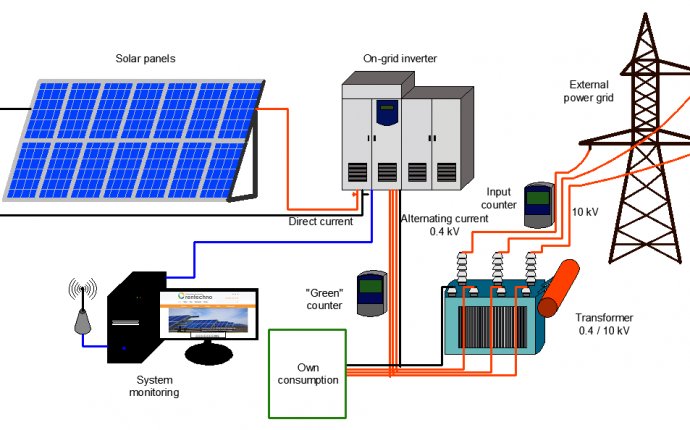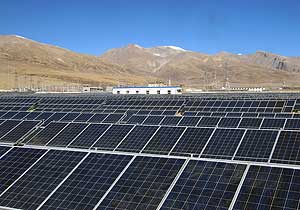
PV Power Systems
Producing energy in the desert with photovoltaics
The PVPS TCP aims to promote the role of energy from solar photovoltaic (PV) technologies as a cornerstone in the transition to sustainable energy systems. It conducts a variety of collaborative projects relevant to solar PV technologies and systems, including cost reduction, analysis of barriers and raising awareness of the potential of PV electricity. Recent work has cast light on solar PV installations in deserts, including consideration of scale and the specific operating conditions that enable an attractive return on investments.
Very large-scale (500 MW) photovoltaic installation (Germud, Qinghai, China).*

Solar PV modules are commercially available, reliable technologies that may be installed on buildings for individual consumption or in large arrays to provide power for regional or national electricity networks. Given this flexibility, there is significant potential for growth of PV in nearly all world regions, and particularly in those regions where there is unobstructed sunlight (irradiation) year-round.
Because deserts are vast areas of land with high levels of irradiation year-round, they provide good siting conditions for the deployment of solar PV technologies. Large-scale solar PV installations (from 10 to 550 MW) are possible, and landowners are able to derive economic benefits from land that is not suitable for agriculture or other industrial activities. Yet, electricity networks are typically limited in desert regions. This may raise costs for project developers to upgrade the electricity transmission and/or distribution networks to operate the system, which is often far from urban and/or industrial centres of consumption. Transmission and distribution losses may pose additional challenges.
For these reasons, the PVPS TCP set out to assess the potential and feasibility of such systems; to develop practical concepts towards implementing very large-scale PV installations in deserts; to actively engage in dissemination and communication with relevant stakeholders; and to develop recommendations on how to overcome barriers to deployment. Technical and economic feasibility, socio-economic benefits, and lessons learned from very large-scale PV installations around the world were also considered.
Since desert temperature, humidity, aerosol clouds and soiling differ considerably from the standard industry conditions used to characterise performance of PV. More accurate data on these conditions improves the performance of PV installations in deserts and the cost-efficiency of the technology, and reduces uncertainty in potential PV production.
Given that much of China’s western provinces are comprised of arid land (Gobi, Ordos and Takla Makan deserts and the Tibetan plateau), this country was chosen as a case study. In developing and operating very large-scale PV installations it was found that policy incentives, such as the adoption of feed-in tariff schemes and the development of subsidy standards and project application and management rules, facilitated expansion of PV technologies in China. Innovation in design and configuration was also found to reduce the costs and increase capacity of PV power plants. In addition, by increasing the PV installations beyond what would normally be considered standard performance, very large-scale PV operators were able to generate 25% more output with only half of the investment. These and other findings have been collected in the summary report,
* Photo courtesy of Keiichi Komoto, Mizuho Information & Research Institute
Activities
- High penetration of PV systems in electricity grids
- Performance and reliability of PV systems
- PV environmental, health and safety
- PV services for developing countries
- Strategic analysis and outreach
- Very large-scale PV power generation systems
Participants
| IEA member
countries |
Partner
countries |
Reg./Int.
orgs. |
| Contracting Parties | 19 | |
| Sponsors |









